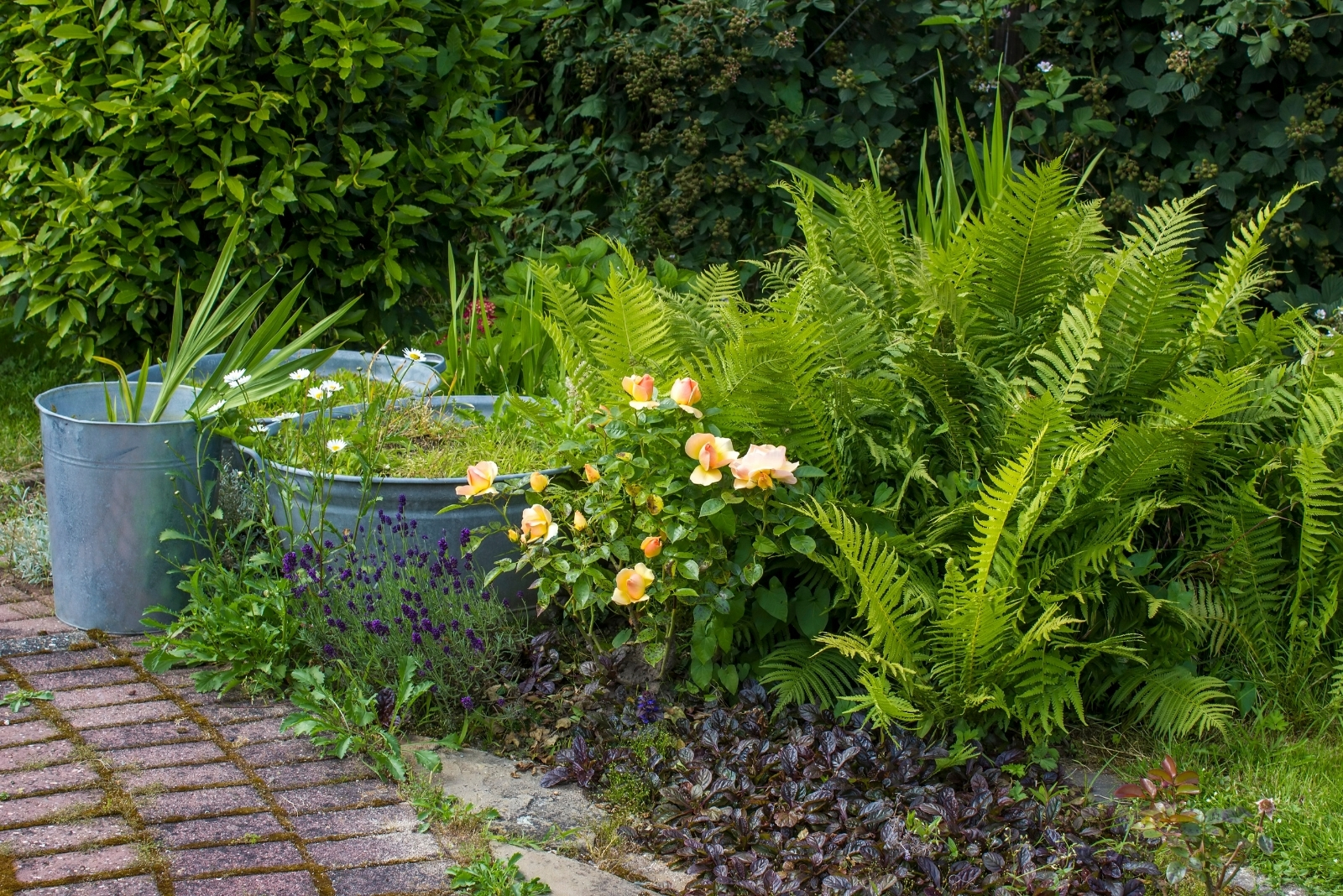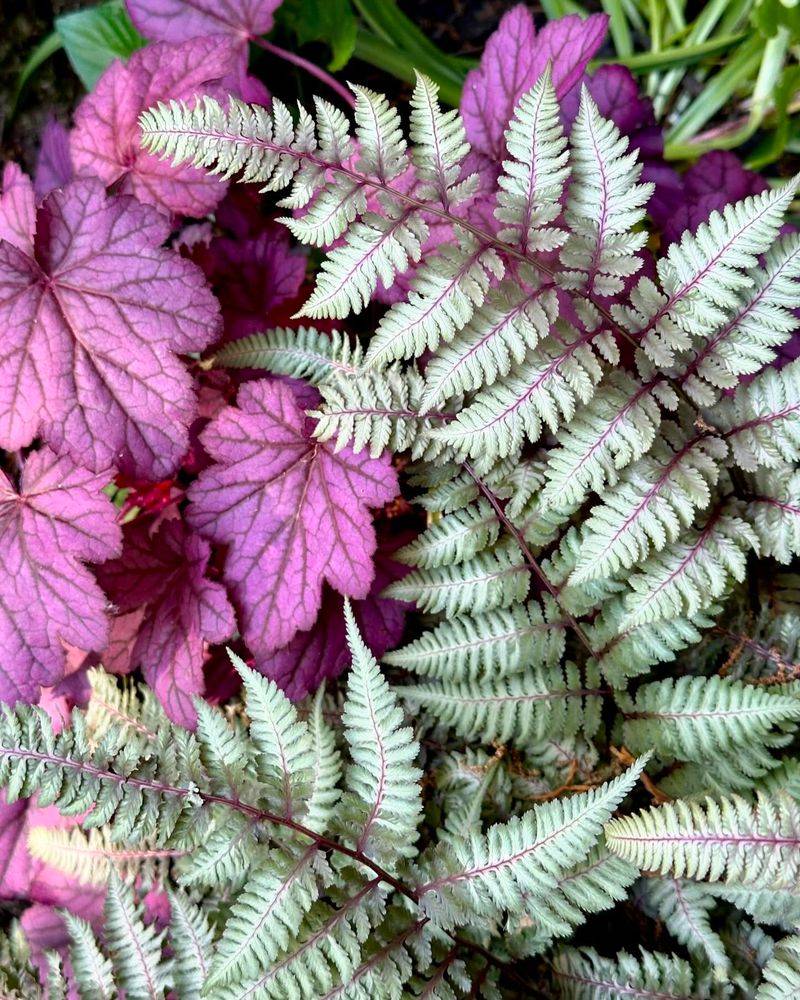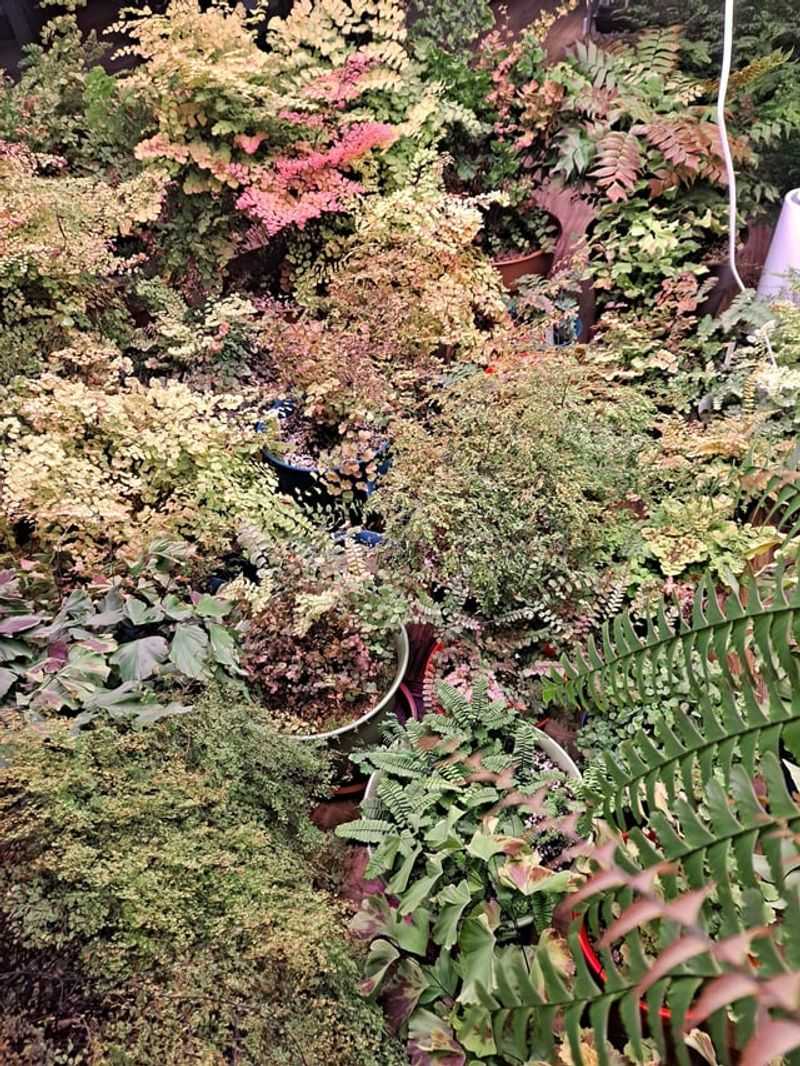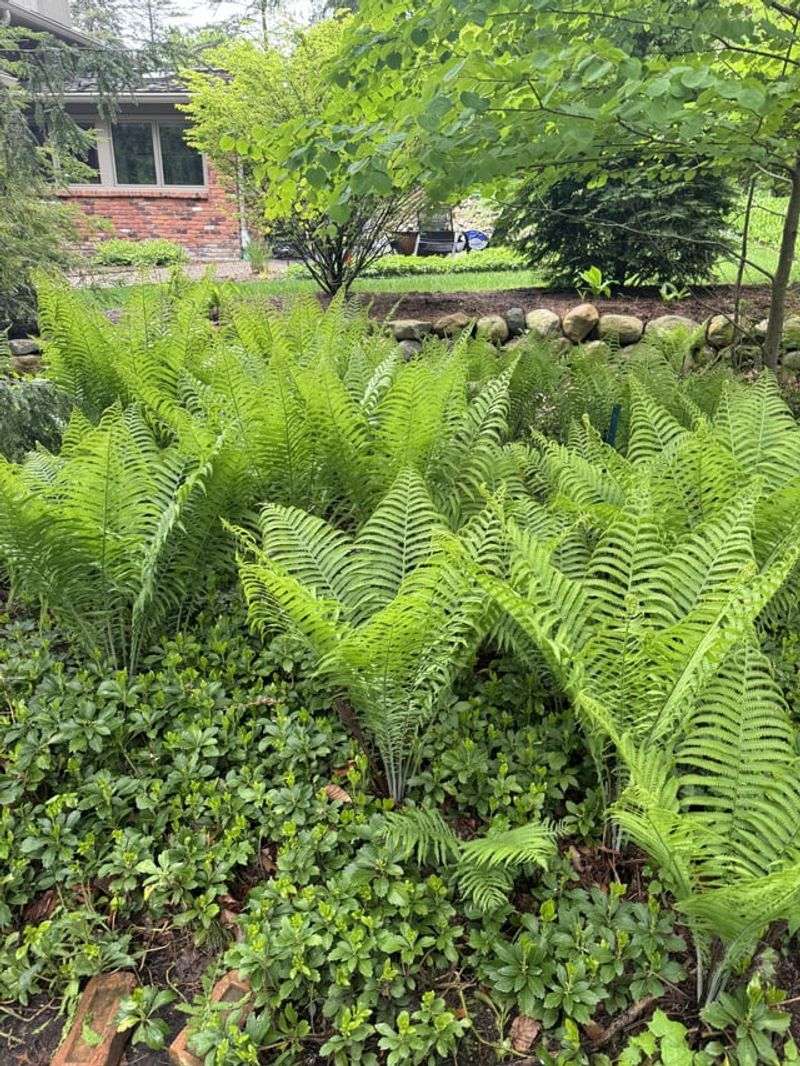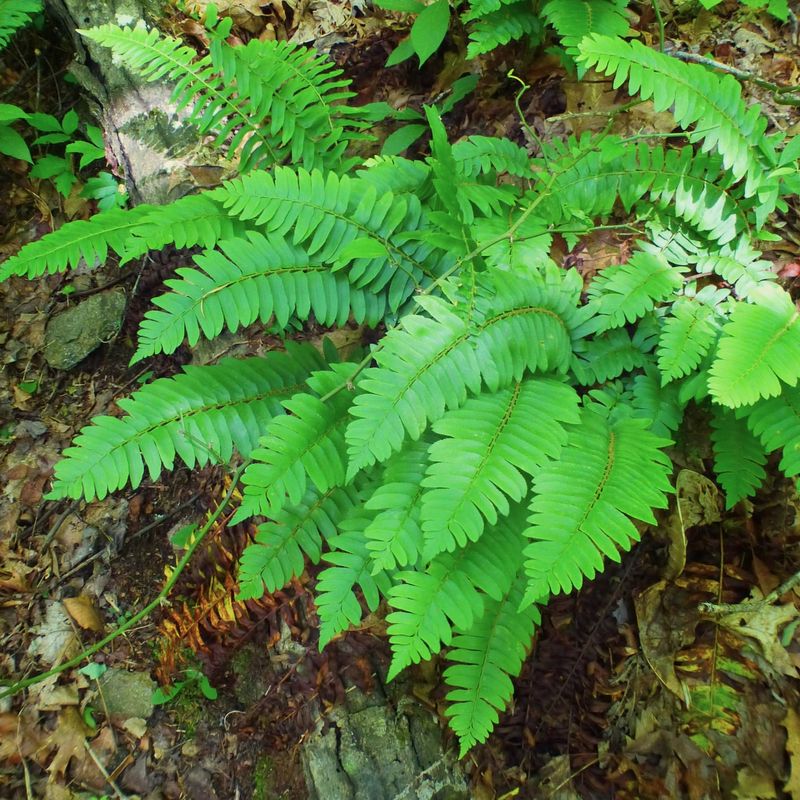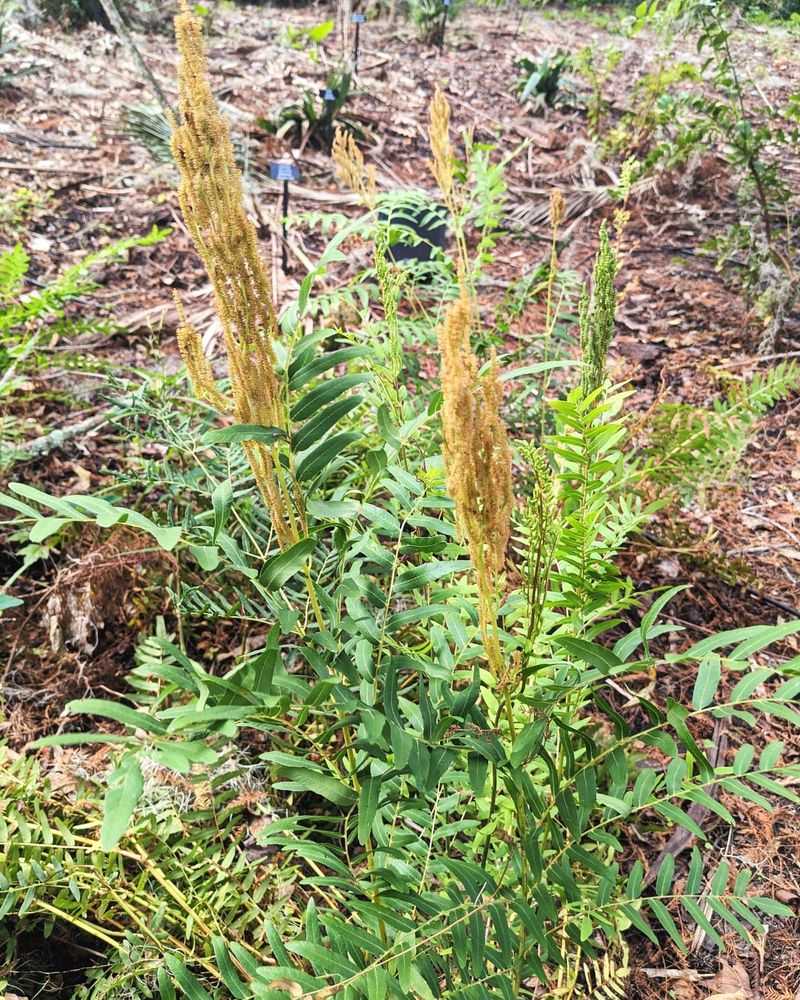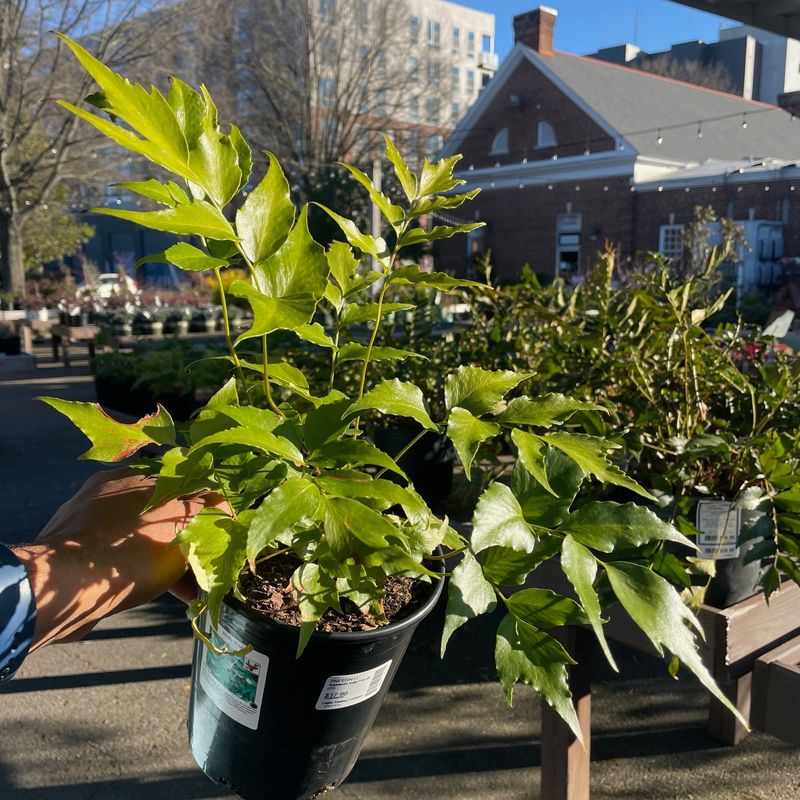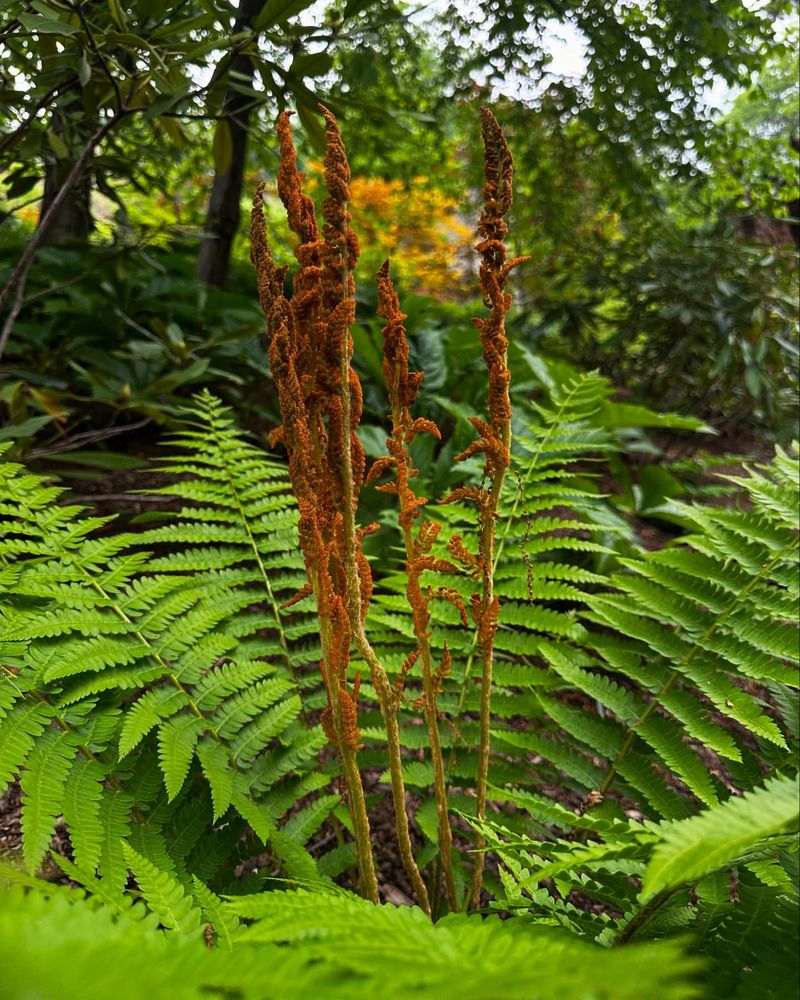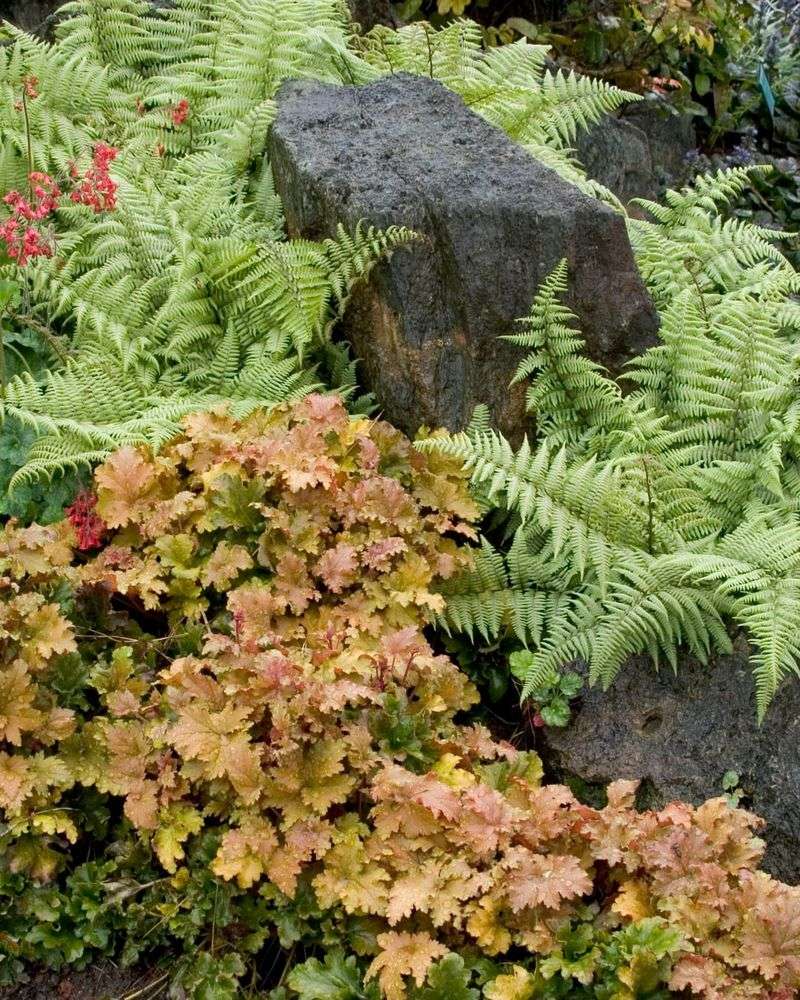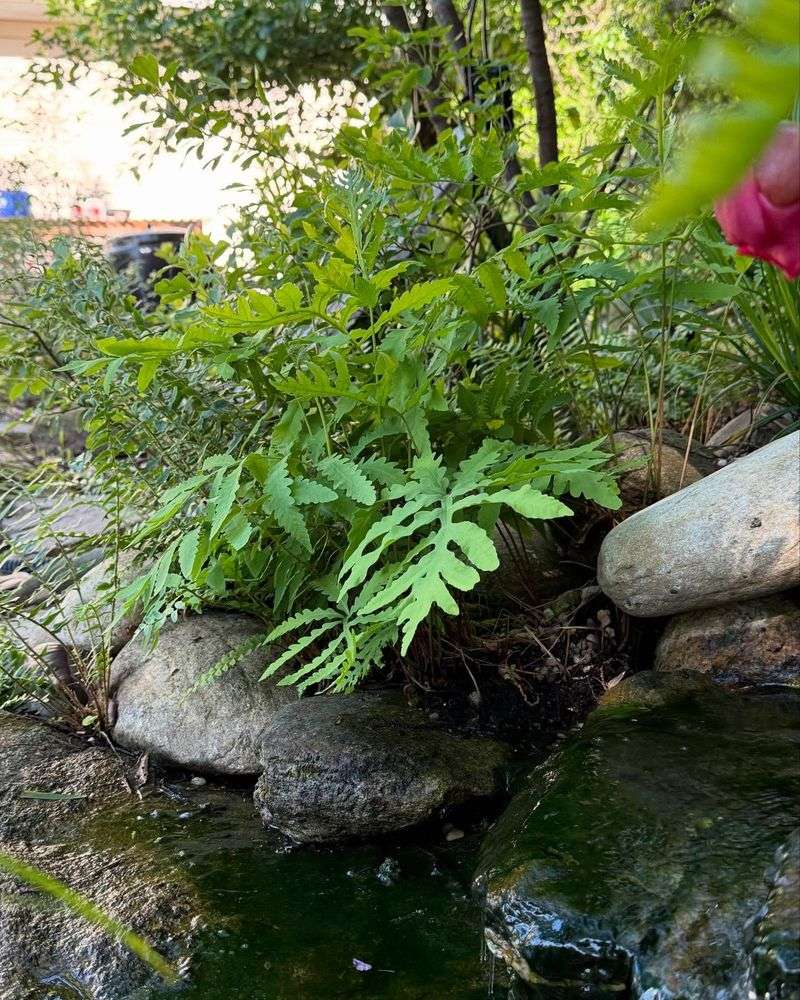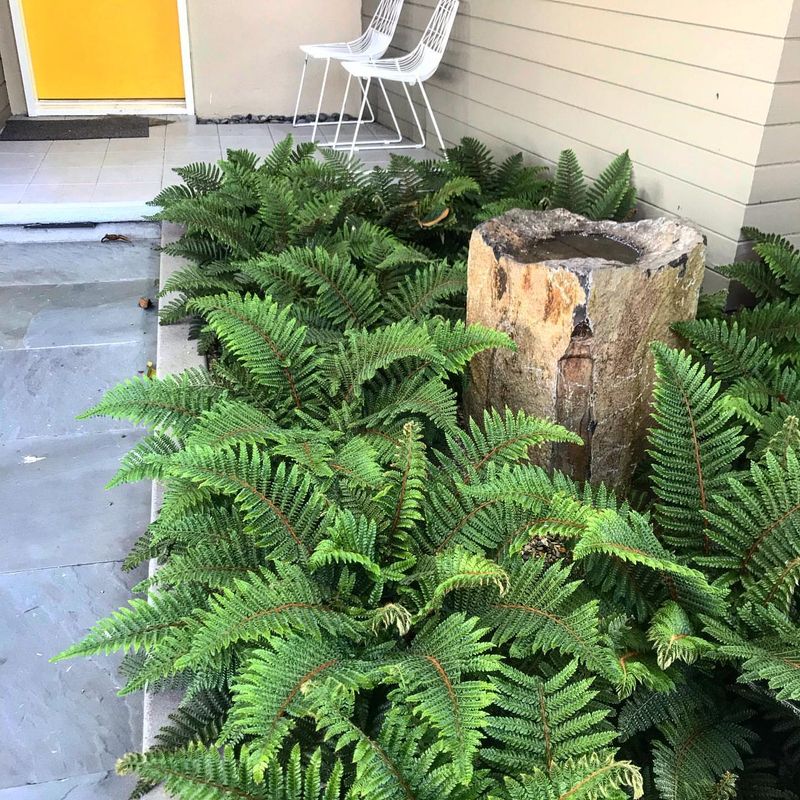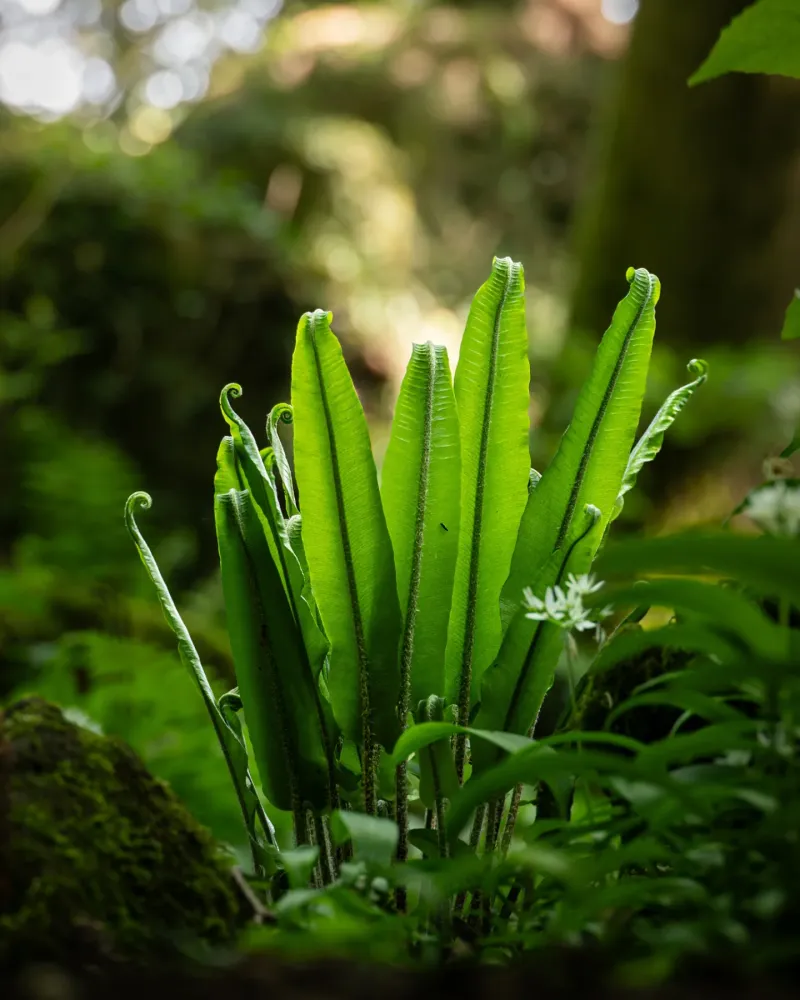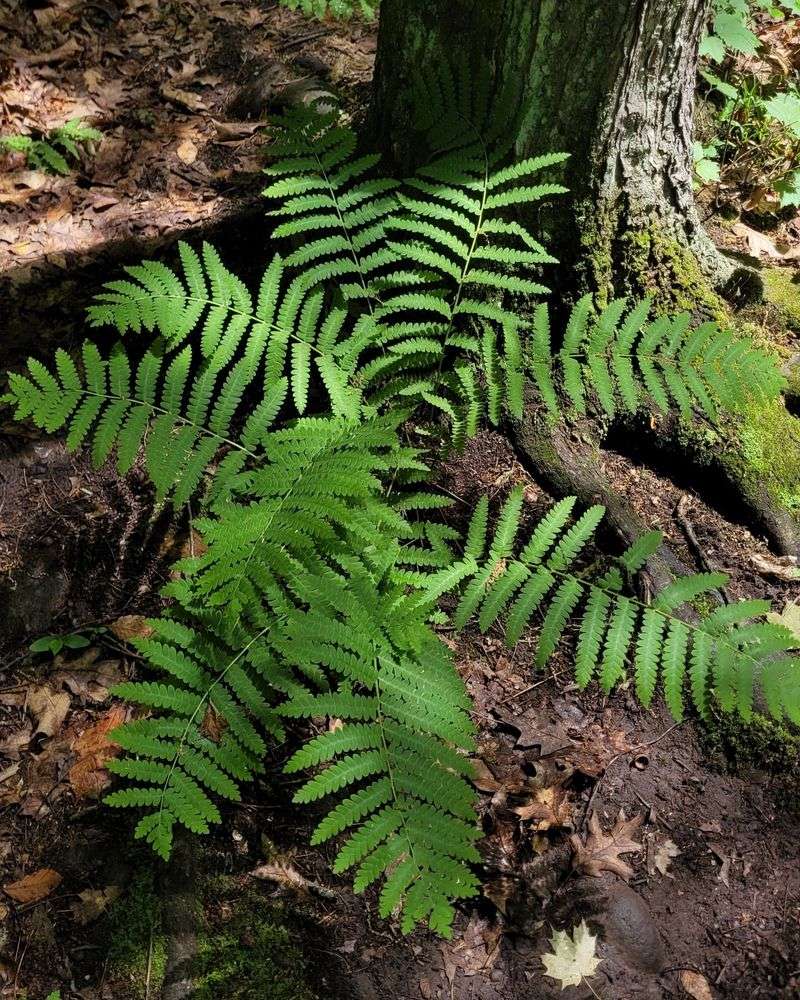In Kansas City, you can plant ferns under large trees to create natural rain shelters. These shady spots protect your delicate plants while adding a lush, green touch to your yard.
You’ll love how the ferns thrive in the shade, giving your garden a peaceful, woodland feel. This simple trick keeps your plants healthy and vibrant through wet seasons.
Seeing your shaded corner flourish will make you proud of your little green sanctuary.
1. Japanese Painted Ferns
Silver-frosted fronds catch every drop of moisture in these stunning shade-lovers. Kansas City gardeners appreciate how these ferns thrive even during our hot summers when planted in well-prepared soil under oak canopies.
Their subtle purple stems create a magical effect when rain trickles through tree branches above. Just mulch heavily and water during establishment for best results.
2. Maidenhair Ferns
Delicate black stems support lacy green foliage that dances with every raindrop. Many Kansas gardeners overlook these beauties, not realizing they’ll flourish beneath maple trees where other plants struggle.
Their fine texture contrasts beautifully with chunky mulch or river rocks. Create a depression around your tree’s drip line to catch rainfall and direct it toward these moisture-loving plants.
3. Ostrich Ferns
Dramatic vase-shaped growth reaches upward to catch rainfall beneath even the densest tree canopies. Kansas City’s clay soils actually benefit these vigorous growers when amended with compost and positioned where tree roots aren’t too competitive.
Their unfurling fiddleheads in spring are an added bonus for garden visitors. Plant in groups of three or five for the most natural woodland effect.
4. Lady Ferns
Feathery fronds unfurl gracefully in spring, creating natural umbrellas for smaller woodland plants. Missouri native plant enthusiasts love how these adaptable ferns handle our unpredictable weather when planted in rich, moist soil beneath hickory trees.
Their bright green color brings life to shady corners where grass won’t grow. Add leaf mold annually to mimic their natural forest floor habitat.
5. Autumn Ferns
Coppery new growth emerges each season, making these standouts among Kansas City shade gardens. The leathery fronds handle dry spells better than most ferns, perfect for planting beneath water-hogging sweetgum trees.
Their evergreen nature provides winter interest when other plants disappear. Create a shallow basin around your planting area to capture precious rainfall and direct it to the ferns’ root zones.
6. Christmas Ferns
Tough as nails yet elegant, these native ferns stay green through Kansas winters. Their leathery fronds shed water effectively during summer storms, making them excellent choices for erosion control on slopes beneath walnut trees.
Many Kansas City gardeners appreciate how these ferns tolerate the juglone typically produced by walnut roots. Plant them in staggered rows to create natural terracing that slows water runoff.
7. Royal Ferns
Majestic and prehistoric-looking, these moisture lovers create dramatic focal points. Kansas City’s periodic flooding suits these natives perfectly when they’re strategically placed in low spots beneath river birch trees.
Their distinctive fertile fronds resemble rusty flower spikes by midsummer. Dig a slight depression around each planting hole to create a natural rain garden effect that benefits both tree and fern.
8. Holly Ferns
Glossy, pointed leaflets withstand both drought and downpours beneath dense shade trees. Kansas gardeners in challenging spots value these adaptable evergreens for their ability to thrive where other ferns fail.
Their architectural form provides structure even in winter months. Try planting them in a ring around mature elm trees to create a living rain garden that captures moisture before it runs off.
9. Cinnamon Ferns
Rusty spore stalks rise dramatically from lush green fronds in these Missouri natives. Their massive root systems help break up Kansas City’s clay soils while creating channels for rainwater to penetrate beneath thirsty pin oak trees.
The fuzzy fiddleheads emerge covered in cinnamon-colored scales each spring. Plant them where water naturally collects after storms for a practical and beautiful solution to standing water issues.
10. Ghost Ferns
Silvery-white fronds seem to glow in deep shade, creating moonlight effects. Kansas City garden designers love using these hybrids beneath old silver maples where they catch and reflect what little light filters through.
Their ethereal appearance makes even the darkest corner of your yard magical. Create a slight berm around each planting to direct rainfall toward their roots while preventing erosion during heavy Missouri downpours.
11. Sensitive Ferns
Beaded spore cases persist through winter, adding interest long after fronds have withered. These Kansas natives spread gradually to form colonies beneath tulip poplars, creating natural water-retention areas.
Their bright green, wavy-edged fronds react visibly to rainfall by perking up immediately. Plant them where roof runoff naturally flows to create a functional rain garden that protects your home’s foundation.
12. Hay-scented Ferns
Fragrant fronds release a sweet aroma when brushed against or after rainfall. Kansas City woodland gardeners appreciate how these spreaders quickly fill difficult spaces beneath Norway maples where little else grows.
Their fine texture creates a lush carpet that prevents erosion on slopes. Plant them in a horseshoe pattern around your tree to create a natural basin that collects and directs rainfall toward the tree’s roots.
13. Tassel Ferns
Unusual hanging spore structures dangle like ornaments from these conversation-starters. Kansas City’s occasional ice storms actually highlight these evergreen beauties when planted beneath protective linden trees.
Their glossy, deeply cut fronds stay attractive year-round in our climate. Create a ring of stones around each planting to form a natural reservoir that captures rainfall and slowly releases it to the fern’s roots.
14. Hart’s Tongue Ferns
Strap-like undivided fronds stand out dramatically among traditional feathery types. Missouri gardeners seeking something unique love these conversation pieces when planted in limestone-enriched soil beneath dogwood trees.
Their architectural form creates strong vertical elements in shady spots. Arrange them in a spiral pattern that naturally channels rainfall toward the center, creating an efficient water-collection system for your garden.
15. Interrupted Ferns
Brown fertile segments interrupt the green fronds, creating fascinating patterns. Kansas City native plant enthusiasts value these for their ability to thrive beneath black cherry trees despite the challenging root competition.
Their tall stature makes them perfect backdrop plants in woodland settings. Create a crescent-shaped depression on the downhill side to capture rainfall and prevent it from washing away valuable topsoil.

